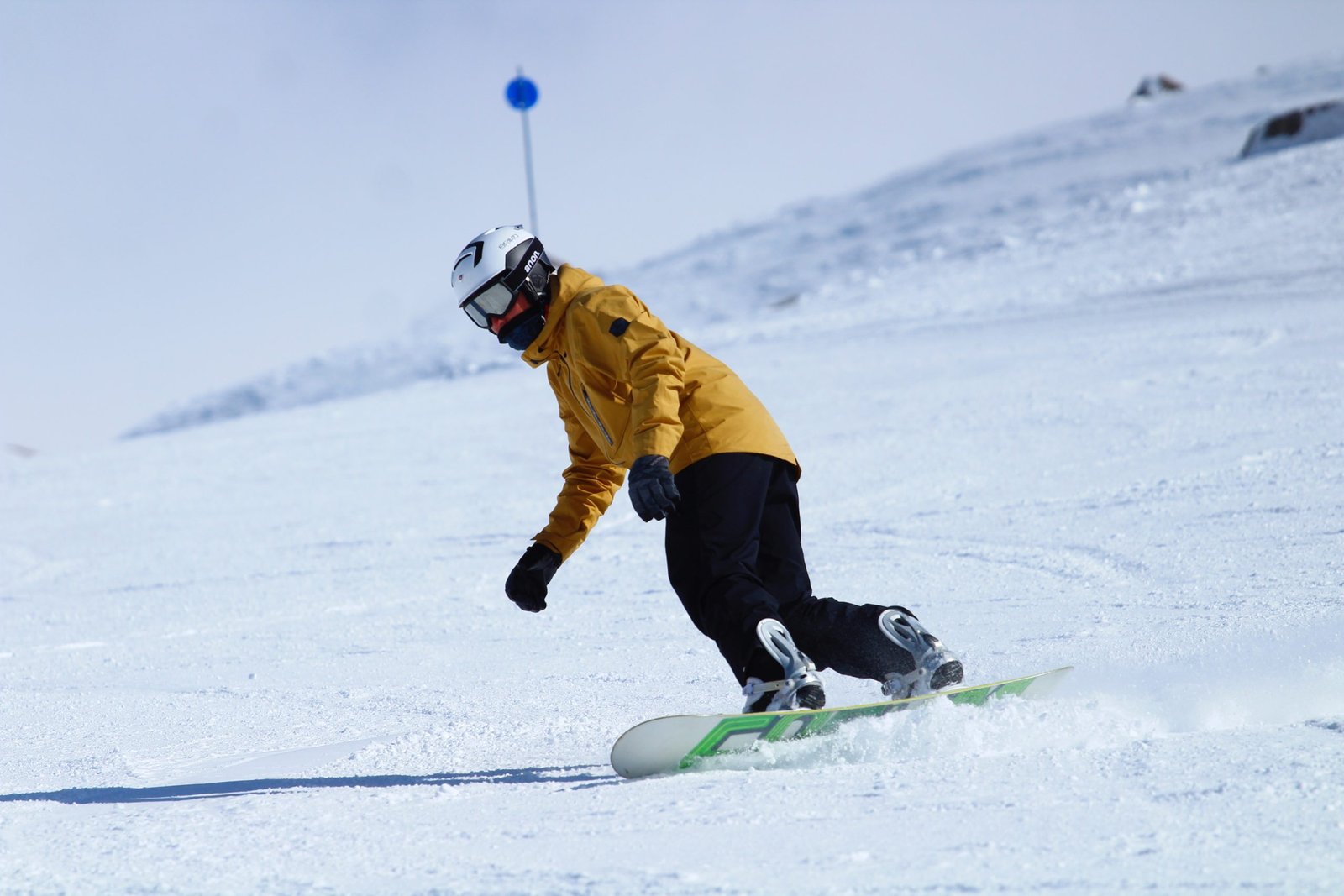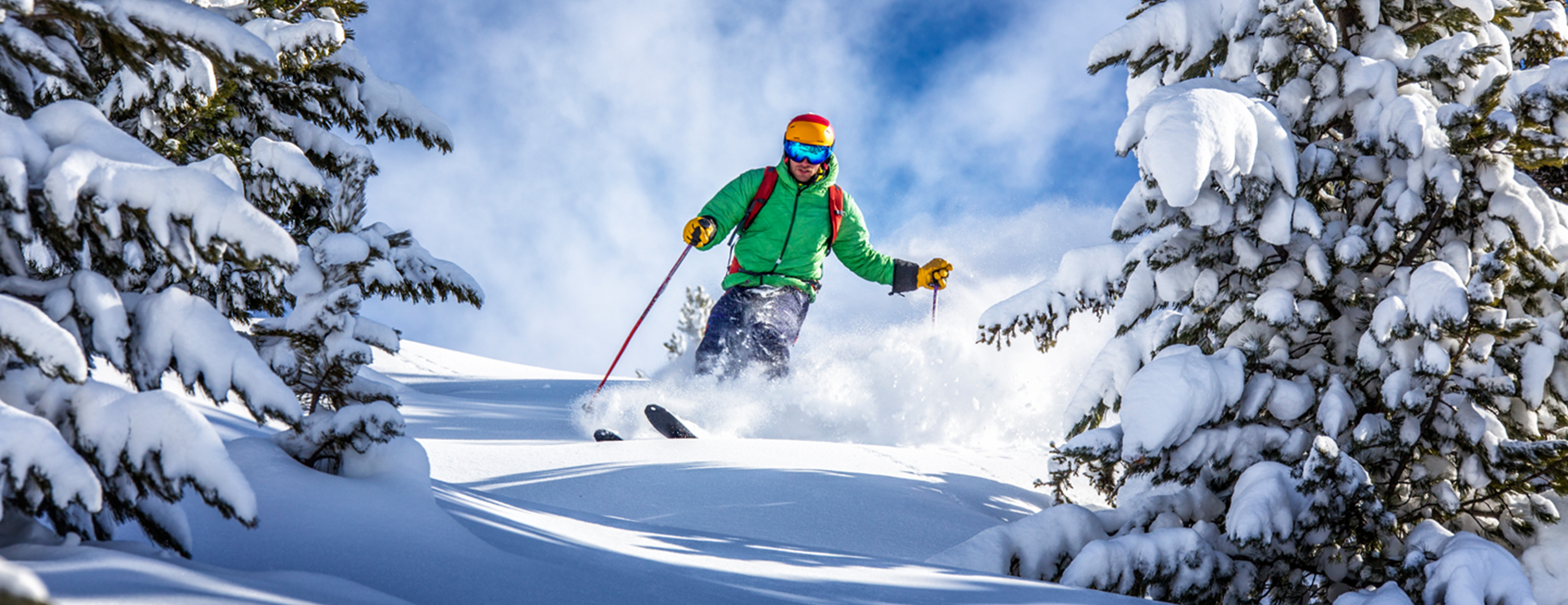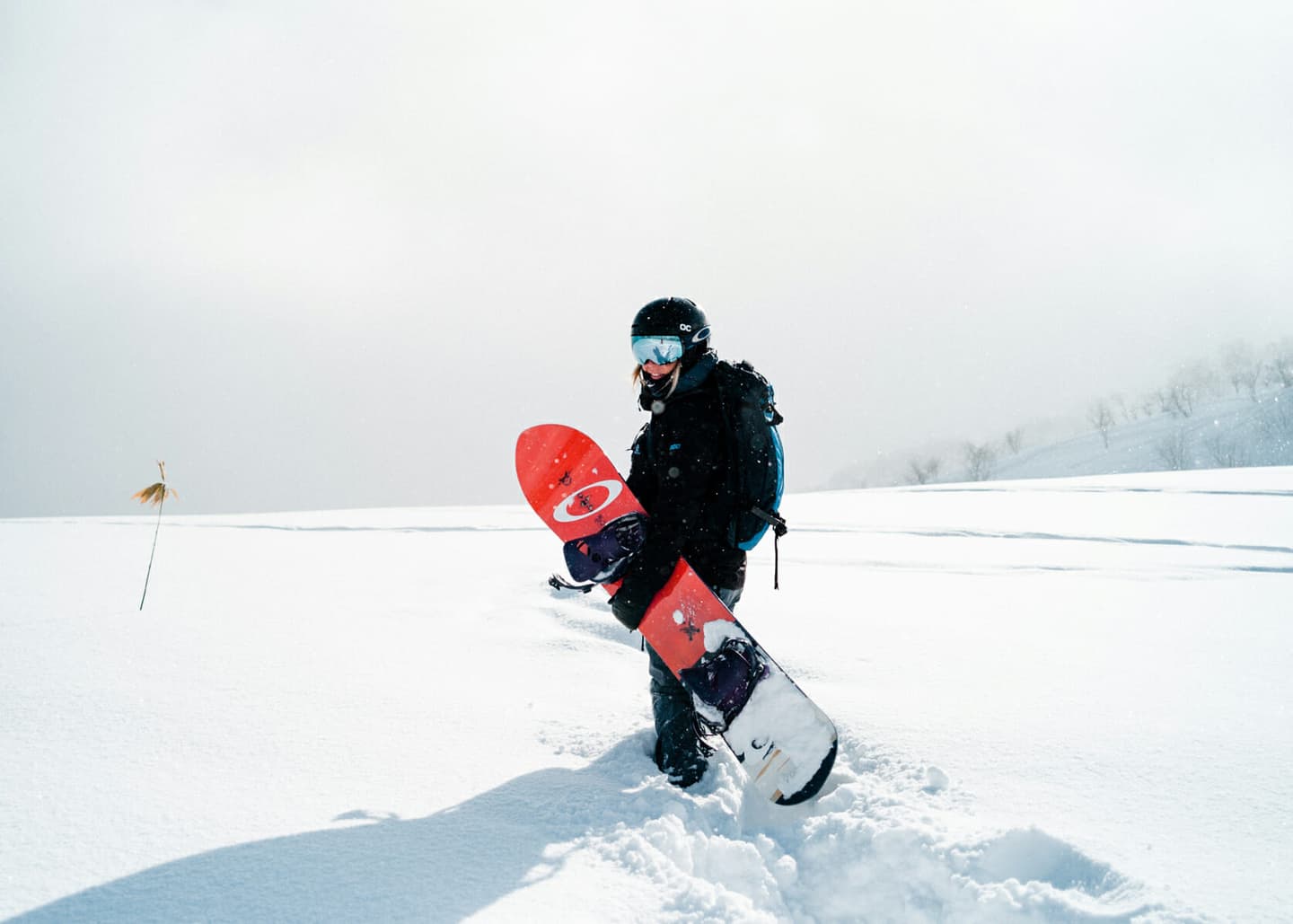
Snowboarding Safety Tips Every Beginner Should Know Before Hitting the Slopes
Written: editor | June 15, 2023

Snowboarding Gear Safety
Choosing the right snowboarding gear
When it comes to snowboarding, safety should be your top priority. And it all begins with choosing the right gear. Here are a few tips to ensure you make the best choices:
-
Snowboard: Select a snowboard that matches your skill level and riding style. Consult with experts or experienced snowboarders to get recommendations.
-
Bindings: Bindings are crucial for securing your feet to the snowboard. Make sure they fit your boots properly and allow for easy adjustment.
-
Boots: Comfortable boots that fit correctly are essential. They should offer good ankle support and allow for easy movement.
The importance of wearing a helmet
Wearing a helmet is non-negotiable when it comes to snowboarding safety. Here's why:
-
Protection: Helmets provide crucial head protection and reduce the risk of serious injuries in case of falls or collisions.
-
Visibility and Communication: Some helmets come with built-in goggles that improve visibility and protect your eyes from sun, wind, and snow. They also allow for easy communication with other riders.
Protective gear for beginners
As a beginner, it's important to invest in additional protective gear. Here are a few items to consider:
-
Wrist Guards: Wrist injuries are common among beginners. Wearing wrist guards can help prevent fractures and sprains.
-
Knee and Elbow Pads: Falls can put stress on your knee and elbow joints. Pads provide cushioning and protect these vulnerable areas.
-
Impact Shorts: Designed to protect your tailbone and hips, impact shorts can minimize injuries in case of hard falls or crashes.
Remember, these safety tips are just the starting point. Taking lessons from a certified instructor and practicing in designated areas will further enhance your snowboarding skills and safety. So, gear up and enjoy the slopes responsibly!

Proper Snowboarding Technique
Stance and body positioning
When it comes to snowboarding, the right stance and body positioning are crucial for your safety on the slopes. Start by standing with your feet shoulder-width apart and knees slightly bent. Your weight should be evenly distributed between your front and back foot. As you ride, maintain a forward-facing position and keep your upper body relaxed and centered over your board. This balanced stance will help you maintain control and stability while carving through the snow.
Learning to fall safely
Falling is a part of learning any new sport, and snowboarding is no exception. However, there are ways to fall safely and minimize the risk of injury. The key is to try and roll with the fall, distributing the impact across your body rather than absorbing it with one specific area. Additionally, avoiding putting your hands out in front of you can prevent wrist injuries. Invest in proper protective gear, such as a helmet and wrist guards, to provide an extra layer of protection.
Understanding basic snowboarding maneuvers
To truly enjoy snowboarding and progress in your skills, it's important to understand basic maneuvers. Start by practicing your turns, both heel-side and toe-side, to control your speed and direction. Once you feel comfortable with turning, you can move on to more advanced techniques such as carving, jumping, and riding switch (riding with your non-dominant foot forward). Always remember to continue practicing and gradually challenging yourself to improve and enhance your snowboarding abilities.
By following these proper snowboarding techniques, you can improve your safety on the slopes and enhance your overall snowboarding experience. Keep in mind that learning to snowboard takes time and practice, so be patient with yourself and enjoy the ride!

Mountain Safety Tips
Whether you're a beginner or experienced snowboarder, safety should always be your top priority on the mountain. Here are some essential tips to keep in mind to ensure a safe and enjoyable snowboarding experience.
Follow mountain rules and signs
-
Observe signage: Pay attention to all signs and markers on the mountain. They provide important information about trail conditions, hazards, and closures.
-
Know the mountain rules: Familiarize yourself with the mountain's specific rules and regulations. These rules are designed to keep everyone safe and prevent accidents.
Avoiding dangerous areas on the slope
-
Stay on marked trails: Stick to designated trails that match your skill level. Venturing into closed or off-limits areas can be extremely dangerous and could result in serious injury.
-
Avoid high-risk areas: Stay away from areas with steep slopes, cliffs, or trees if you're still a beginner. These areas require advanced skills to navigate safely.
Dealing with changing weather conditions
-
Check the weather forecast: Always be aware of the weather conditions before heading out to the mountain. In case of severe weather conditions, consider postponing your snowboarding plans.
-
Adjust your riding style: Adjust your riding technique according to the weather conditions. Be prepared for changes in visibility, icy patches, or heavy snowfall.
Remember, wearing proper protective gear such as a helmet and wrist guards is essential for your safety. Additionally, make sure to stay hydrated, take breaks when needed, and listen to your body to prevent fatigue or exhaustion.
By following these mountain safety tips, you can minimize the risks and enjoy your snowboarding adventure to the fullest. Stay safe and have fun on the slopes!

Avalanche Safety
Understanding avalanche risks
When it comes to snowboarding, safety should always be a top priority. Understanding avalanche risks is crucial to ensure your wellbeing on the slopes. Familiarize yourself with the local avalanche bulletin or consult with experts who specialize in avalanche forecasting. They can provide valuable information about the current snowpack conditions, stability, and potential risks in the area where you plan to snowboard.
Recognizing warning signs
Learning to recognize warning signs of an impending avalanche is essential for your safety. Look out for cracking or collapsing snow, recent avalanche activity, unstable snow formations, and whumping sounds. Additionally, pay attention to weather conditions, such as heavy snowfall or rapid temperature changes, as they can increase the likelihood of avalanches.
Taking necessary precautions
To minimize the risk of getting caught in an avalanche while snowboarding, take the following precautions:
-
Attend avalanche safety courses: These courses provide valuable knowledge and skills to assess risks, use safety equipment, and make informed decisions while snowboarding in avalanche-prone areas.
-
Carry essential avalanche safety equipment: Always carry a beacon, shovel, and probe. These tools are essential for locating and rescuing someone buried under the snow in case of an avalanche.
-
Travel with a partner: Snowboarding with a partner increases safety as you can watch out for each other and provide assistance if needed.
-
Observe safe terrain practices: Stick to designated snowboarding areas, avoid steep slopes, and pay attention to slope angles, as these factors can impact avalanche risks.
Remember, staying informed, being cautious, and practicing safe snowboarding techniques are key to enjoying the slopes while minimizing the risk of avalanches.

Riding with Others
The buddy system
When it comes to snowboarding, it's always safer to ride with a buddy. The buddy system ensures that you have someone looking out for you and vice versa. Choose a partner who is at a similar skill level and has similar goals for the day on the slopes. Make a plan before starting, including designated meeting points and times to regroup throughout the day. This way, you can stay connected and keep each other safe.
Communicating on the slope
Clear communication is essential when riding with others. Before you hit the slopes, establish a few basic signals or hand gestures to communicate with your buddy. These can be as simple as a thumbs up to indicate that you're ready to start, or a hand wave to signal that you need to stop. It's important to be able to understand each other quickly and efficiently, especially in case of emergencies.
Helping each other in case of emergency
In the event of an emergency, having a buddy by your side can be a real lifesaver. If you or your buddy get injured or lost, make sure you have a plan in place to handle these situations. Carry a fully charged cellphone in a waterproof case in case you need to call for help. Learn basic first aid techniques and make sure your buddy is aware of them too. Most importantly, stay calm and think clearly, and never leave a friend behind.
Remember, snowboarding is a fun and thrilling sport, but safety should always be the top priority. Follow these tips and ride with others to ensure a safe and enjoyable experience on the slopes.

Physical Conditioning and Warm-up
Preparing your body for snowboarding
If you're a beginner snowboarder looking to hit the slopes for the first time, it's important to prioritize your safety. By taking a few precautions and following some basic safety tips, you can reduce the risk of injuries and make the most of your snowboarding experience.
One crucial aspect of snowboarding safety is physical conditioning and warm-up. Before you start snowboarding, it's essential to prepare your body for the physical demands of the sport. Here are some tips to get you started:
-
Build strength and flexibility: Engage in regular exercises that focus on building strength in your legs, core, and arms. Strengthening these areas will help you maintain balance and control while snowboarding. Additionally, incorporating flexibility exercises into your routine can improve your range of motion and prevent injuries.
-
Warm-up before hitting the slopes: Before you start snowboarding, spend a few minutes warming up your body. Dynamic stretches, such as leg swings, arm circles, and torso twists, can help increase blood flow and loosen up your muscles. This will reduce the risk of muscle strains and improve your overall performance on the slopes.
-
Stay hydrated and fueled: Snowboarding is a physically demanding activity, so it's crucial to stay hydrated and properly nourished. Drink plenty of water throughout the day and ensure you have a balanced meal before hitting the slopes. Pack some nutritious snacks to keep your energy levels up during your snowboarding session.
By focusing on physical conditioning and warm-up, you'll not only reduce the risk of injuries but also enhance your snowboarding experience. Remember to start slowly, listen to your body, and always prioritize safety on the slopes. Stay safe and enjoy the thrill of snowboarding!

Conclusion
For beginners venturing into the world of snowboarding, safety should be your top priority. By following these essential safety tips, you can minimize the risk of accidents and injuries while enjoying your snowboarding sessions. Remember to always wear the necessary protective gear, take lessons from qualified instructors, and be aware of your surroundings. Practice on appropriate slopes, start slow, and gradually build up your skills. Always use proper techniques for stopping, turning, and falling to reduce the likelihood of injury. Lastly, be mindful of weather conditions and follow any safety guidelines provided by the resort or park. Snowboarding can be an exhilarating and enjoyable sport, but it's important to take the necessary precautions to ensure your safety and the safety of others.
Summary of beginner snowboarding safety tips
- Wear appropriate protective gear, including a helmet, wrist guards, and knee pads.
- Take lessons from qualified instructors to learn proper techniques and safety guidelines.
- Start on beginner slopes and gradually progress to more challenging terrain.
- Use proper techniques for stopping, turning, and falling to minimize the risk of injury.
- Be aware of your surroundings and other snowboarders on the slope.
- Stay hydrated and take breaks to prevent fatigue or exhaustion.
- Follow any safety guidelines provided by the resort or park.
- Stay updated on weather conditions and avoid snowboarding in hazardous weather.
- Always ride within your skill level and avoid taking unnecessary risks.
Encouragement to prioritize safety in every snowboarding session
Prioritizing safety is crucial in every snowboarding session, regardless of your skill level. By making safety a priority, you can minimize the risk of accidents and injuries, ensuring a fun and enjoyable experience on the slopes. Remember that snowboarding is a physically demanding sport, and taking the necessary precautions will help to prevent unnecessary accidents.
Frequently Asked Questions about snowboarding safety for beginners
-
Q: Is it necessary to wear a helmet while snowboarding?
A: Yes, wearing a helmet is highly recommended to protect against head injuries. -
Q: How long does it take to become a proficient snowboarder?
A: It varies for each individual, but consistent practice and dedication can help you progress quickly. -
Q: Can anyone learn to snowboard, or is it only for athletic individuals?A: Snowboarding is a sport that can be learned by individuals of all fitness levels with proper instruction and practice.
-
Q: What should I do if I fall or get injured while snowboarding?A: If you fall or get injured, assess the situation, and seek medical attention if needed. It's essential to listen to your body and not push yourself if you're in pain or discomfort.



